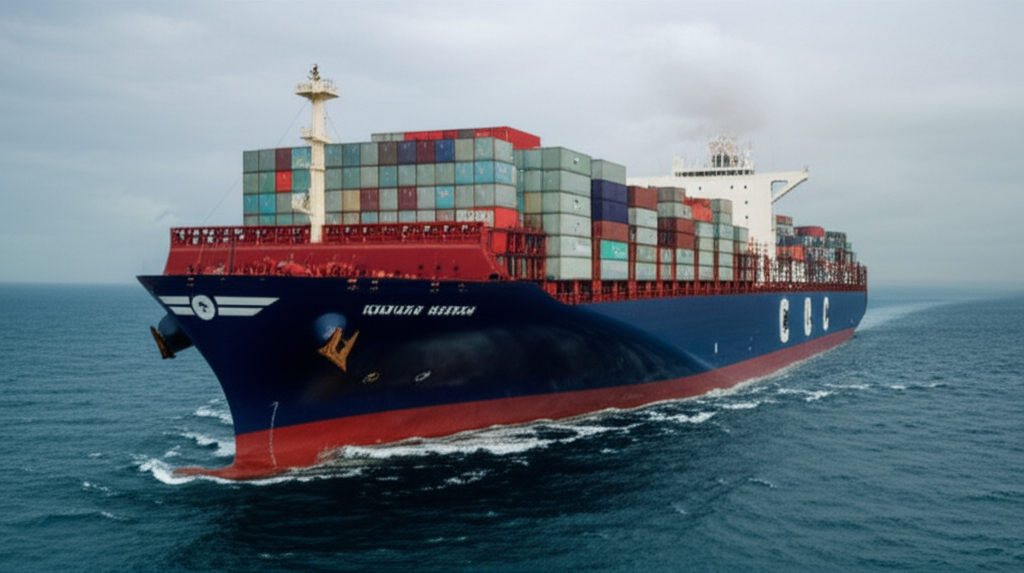Shipping Stocks Rally: Why Institutional Money Is Pouring Into $10B+ Giants
In a global economy still navigating choppy waters, a surprising beacon of strength has emerged in the shipping sector. Major shipping corporations, particularly those boasting market capitalizations exceeding $10 billion, have recently witnessed a significant surge in their stock prices. This rally isn’t just retail enthusiasm; it’s marked by a distinct inflow of institutional capital, indicating that large investment funds, hedge funds, and asset managers are increasingly confident in the industry’s near-term prospects. For young adults keeping an eye on market trends and seeking to understand where the “smart money” is moving, this development in a traditionally cyclical industry warrants a closer look.
The primary catalyst behind this renewed institutional interest can be traced directly to geopolitical tensions, most notably the ongoing disruptions in the Red Sea. Attacks by Houthi rebels have compelled major shipping lines to reroute their vessels, eschewing the swift passage through the Suez Canal in favor of the much longer journey around Africa’s Cape of Good Hope. This diversion adds thousands of nautical miles, weeks to transit times, and significantly higher fuel costs for each voyage. While a headache for global supply chains, for shipping companies, it effectively removes capacity from the market. Longer routes mean fewer available ships to carry the same amount of cargo, tightening supply and consequently driving up freight rates. Institutional investors, recognizing this immediate and impactful supply constraint, are betting that these elevated rates will translate into substantial profits for the industry’s titans. These companies, with their vast fleets and established global networks, are best positioned to capitalize on such an environment, passing on increased costs to consumers and enjoying a boost in their top-line revenue.
Beyond immediate geopolitical factors, underlying supply-demand dynamics within the global shipping industry are also playing a crucial role. Following a period of massive profitability during the pandemic-induced supply chain chaos of 2020-2022, many shipping companies scaled back new vessel orders, fearing an eventual market oversupply. This cautious approach has resulted in a relatively restrained pipeline of new ship deliveries in the near term. Simultaneously, the effective capacity reduction due to Red Sea rerouting is compounding this limited new supply. On the demand side, despite some economic headwinds, global trade remains robust. Businesses globally are still engaged in inventory replenishment cycles, shifting from a “just-in-time” to a “just-in-case” inventory strategy after lessons learned during the pandemic. This strategic pivot ensures a baseline demand for shipping services, providing a stable foundation upon which the current capacity constraints can drive rates higher. Institutional investors are keen on sectors where supply is constrained while demand persists, creating a favorable pricing environment.
Furthermore, the robust financial health of many of these multi-billion dollar shipping giants is making them attractive propositions. The unprecedented profits of the pandemic era allowed many to significantly de-leverage their balance sheets, repay debts, and build substantial cash reserves. This financial fortitude positions them well to navigate potential market volatility and even undertake strategic investments or return capital to shareholders through dividends and share buybacks. For institutional money, a company with a strong balance sheet is a more secure investment, particularly in an environment where inflation and interest rates remain a concern. Shipping companies, with their ability to adjust freight rates, can sometimes act as an inflation hedge, passing on rising operational costs. This combination of strong fundamentals and an immediate, rate-boosting external factor creates a compelling investment thesis for large-scale capital. While the shipping industry is inherently cyclical, prone to boom and bust cycles, the current confluence of reduced effective capacity, resilient demand, and healthy balance sheets suggests a period of elevated profitability, making these $10B+ giants prime targets for institutional capital seeking robust returns. The strategic long-term view of these institutions likely factors in the critical role shipping plays in global trade, making these foundational assets appealing even beyond short-term rate fluctuations.
Ultimately, the pouring of institutional money into these shipping giants reflects a calculated bet on the persistence of current market conditions and the inherent strength of the industry’s dominant players. While the Red Sea crisis provides an immediate uplift, the underlying supply-demand equilibrium and the companies’ improved financial standing offer a more enduring foundation for this rally. Investors are recognizing that even as the global economy faces uncertainties, the movement of goods remains fundamental, and the major shipping lines are uniquely positioned to benefit from both short-term disruptions and long-term trade dynamics, cementing their status as crucial arteries of global commerce.





